11 min read
FAQ™ 202 vs. FAQ™ 202 plus - What’s the difference?
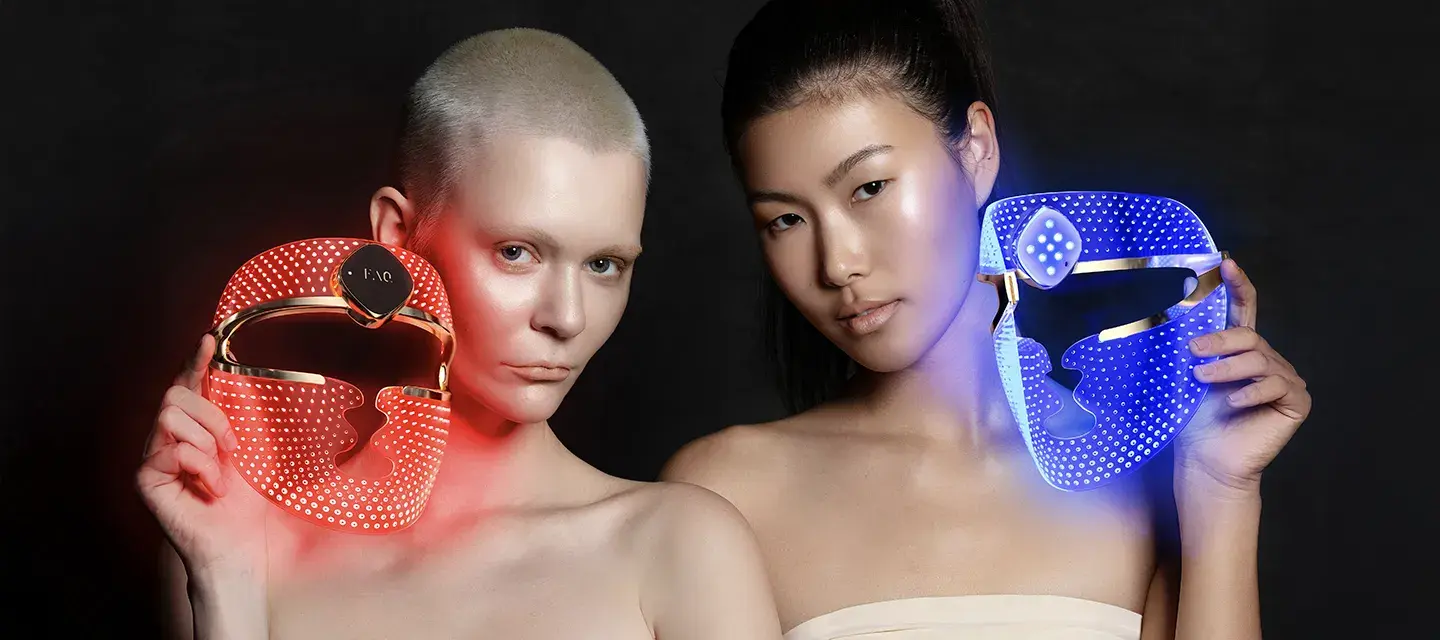
Has LED led us to the (skincare) promise land? Well, it's almost 50 years since the beginning of this story, and a lot has happened before you asked what the difference is between FAQ™ 202 and FAQ™ 202 plus.
Long, long before skincare light therapy was ever a twinkle in its inventors' eye, there were the mid-60s. Counter culture rose as hippies grew their hair, sat around a fire, and formed colonies denouncing state control, while delighting in alternative lifestyles and drugs other than suburban noon martinies, recreational Valium, and chainsmoking.
Back there in Europe, a Hungarian doctor, Endre Mester, was in his lab at Semmelweis Medical University, fiddling with what was called Low-level laser (light) therapy (LLLT). He was trying to repeat the experiment of America's Dr. McGuff, who had used a laser to cure tumours in rats. Still, Mester's laser had much lower energy, and no cancers were cured in his shaved rats. But disappointment soon turned curiosity as he noticed unexpected changes. The rats' wounds healed and their fur grew back, much faster than expected. This was the first indication that a laser does not need to be this superheroish, coherent, and monochromatic heat beam, but that lower-level energies, such as non-coherent light-emitting diodes (LEDs), may have their own potential in skincare and medicine.
NASA, always on the lookout for new safe therapies and effective and easily-transportable-into-the-stratosphere tech, took notice. They looked at the initial findings, developed them further, and used LED therapy to help astronauts looking down on Earth from their spacebird perspective. LED light therapy was successfully used to heal wounds and cuts on a space station and to grow space lettuce. This meant our emissaries in outer space no longer needed to pine for ER efficacy and that they could have some fresh veggies far above the home planet's fertile soil. LEDs provided the wavelengths that plants need to photosynthesize, also giving hope for terraforming inhospitable environments for future missions.
As society became ever more visual, it allowed us to compare ourselves to the whole world and not just our immediate neighbours, so physical appearance also grew in importance. This is not to say that the history of beauty standards means people have let themselves go, drudging through the muddy streets of the past. The relentless pursuit of beauty, longevity, and eternal youth has marked our species' existence, as reflected in myths and legends that treat youth as a desired commodity. Springs of eternal life keep popping up across global cultures, and we are no different today. We keep searching for the same things through other means - light therapy.
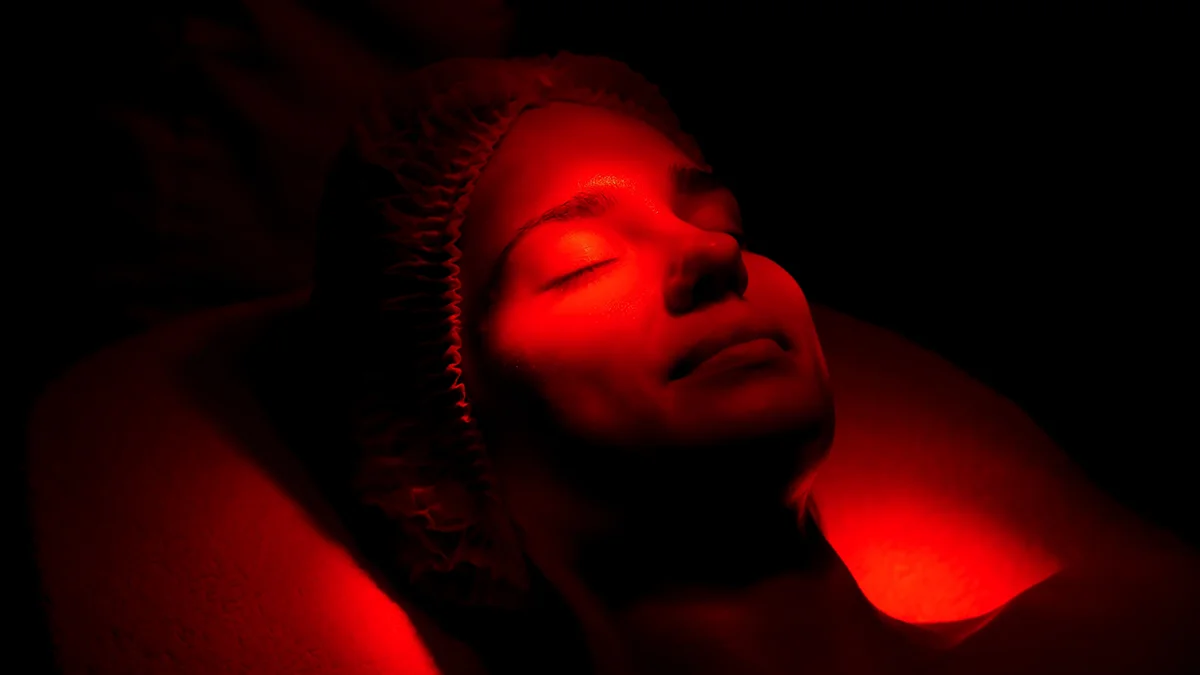
Light therapy was readily accepted into medicine for wound healing, inflammation, and pain management. But the same mechanisms that allowed cells to work more effectively to clear inflammation and help tissue and hair follicles regenerate, also made the treated skin look younger. So, the beauty and wellness industry became interested in a whole new, unexplored anti-aging market and started doing its own research. What started as bulky machinery, only available in professional treatments and dermatology offices, evolved together with the tide of miniaturization. New beauty tech companies have formed and built their businesses on rejuvenation via non-invasive, zero-pain, no-rebound-time treatments, focusing mostly on LED light therapy, particularly near-infrared (NIR) and red light.
What is FAQ™ 200 collection?
One of the mega companies that jumped the red light therapy train is FAQ™ Swiss, FOREO's sister brand dedicated to premium anti-aging products, using new technologies and exclusive skincare ingredients. But, they didn't just jump on the train. They took over (choo-choo), revolutionizing what an LED facial mask can be by putting users' comfort, real-life considerations, and time constraints first. This successfully merged form and function into a spectacular, new at-home LED mask.
The FAQ™ Swiss portfolio is large and covers face, body, and hair care, but the FAQ™ 200 Collection consists of 5 devices for face, hands, and neck and décolleté areas, 2 topicals, microneedling patches, and a glass skin sheet mask. You can use the topicals, patches, and the sheet mask as is or pair with the devices for a synergistic effect, to boost light therapy or microcurrent effects:
Devices
- FAQ™ 201 Silicone LED Face Mask (red, green, blue LED therapy)
- FAQ™ 202 Anti-aging Silicone LED Mask (full-spectrum + NIR)
- FAQ™ 202 plus LED face mask (full-spectrum + NIR, more LED points and LEDs in the forehead diamond)
- FAQ™ 211 Red Light Neck & Décolleté Mask (reversible, can be used for backne too)
- FAQ™ 221 Anti-aging Red LED Hand Mask (a translucent semi-glove device to rejuvenate hands)

Skincare
FAQ™ P1 Manuka Honey Primer
FAQ™ Microneedling Anti-Wrinkle Hyaluronic Acid Patches (for Forehead & Under Eyes)
FAQ™ Glass Skin Collagen Face Mask
FAQ™ Red Light Peptide Serum
But let's focus on the most important elements of the 200 collection. I won't go into too much tech talk, so even the newcomers to light therapy can get the gist of it. We'll explain the difference between FAQ™ 202 and FAQ™ 202 plus in a real, applicable way of "what does that mean for you". Lets start with FAQ™ 202. The 202 plus will, as its name suggests, be all of this and then some.
FAQ™ 202 features and benefits
LED light face masks work on the same principle as other LED light therapies, be it for medical or cosmetic purposes (or both). There are a few concepts to grasp before we go further.
- The sun is a nuclear furnace.
- The sunlight we get is energy and radiation.
- The light we see is a tiny part of the solar radiation.
- Different colors mean different light wavelengths.
- Specific (visible and invisible (NIR)) wavelengths have therapeutic benefits.
- LED facial masks use those wavelengths to restart sluggish cells and speed up recovery and restoration.
Collagen is a structural protein, the "glue" holding our skin and tissues (bones, muscles, tendons, ligaments, and organs) together. If we took all of the collagen out of someone's body, they'd be a bunch of malfunctioning tissues in a bag of brittle skin. Not pleasant. So we've all got buckets of collagen when we're young, providing strength and structure. That's why you look so fresh, perky, taut, and everything works just as it is supposed to. You can smack your but and have that perfect, toned yet juicy jiggle.
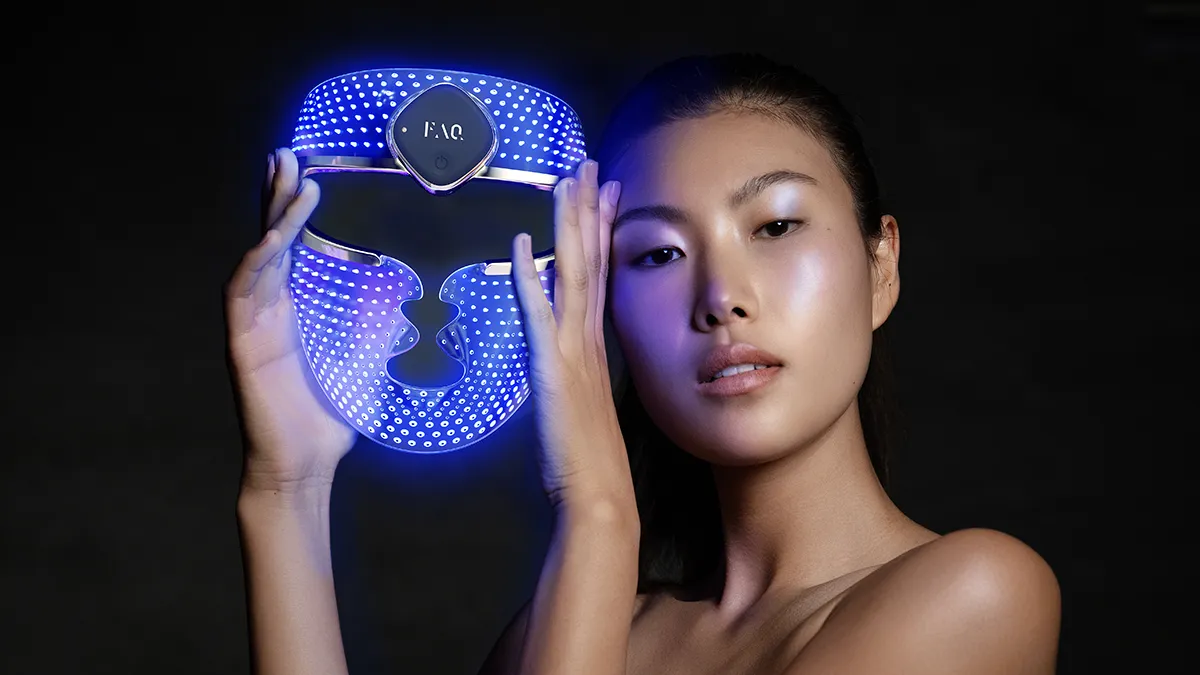
But time ticks on no matter what we do, and the body slows down its repair and restoration. We start making less collagen as early as our mid-20s. Good genes and a healthy lifestyle can help you hold on a bit longer, but once you pass 30, changes become obvious. (In my 30s now) I must say I've enjoyed this decade. Things have gotten harder (and softer), but I've gotten smarter and take less sh.. stuff. This is the emotional and mental stuff, but I've definitely noticed some changes in the body. It is nothing major. I can still pass under late (very late.. like a day before your 30th) 20s. But there is just something, a loss of freshness, and that bouncy elastic quality. Nothing has really gone deep south yet, but that perky something is fading. If you see this in yourself, that's collagen loss. Plus, as you get older, the cells just get worse at producing cellular energy and become sluggish.
FAQ™ 202 LED Face Masks deliver collagen-boosting wavelengths (colors) of LED therapy to help re-strengthen the different layers of the skin and kick-start our natural healing processes. But that's not all they do. Remember how we said light was energy. We've evolved on a planet with sunlight, and somewhere along the early evolutionary trail, adopted some bacteria into a symbiotic relationship where they made energy for us. Now these are cell organelles we call mitochondria. These little bean-like structures are true power plants, keeping us alive. If they stopped working for a while, you'd be dead very fast (that's what arsenic does). So we really, really need our mitochondria to work well. Look at how much energy kids have. Their mitochondria are pristine and very effective. So basically, no mitochondria, no life. As we age, these also malfunction and lower their output, so we get fatigued, tired, and feel foggy and depleted. Mitochondrial dysfunction is one of the top contenders for many chronic diseases today, from malignancy to infertility.
The currency of energy that cells deal in is called ATP (adenosine triphosphate). You don't need to remember this name; just remember it is cell energy. LED light therapy (especially red or infrared) works by increasing NO (nitric oxide) during and after sessions. NO is a vasodilator —aka it widens blood vessels, so you get more blood flow to the treated area. This means more nutrients and oxygen for the mitochondria and production of more ATP that revs up the cells back to optimal function. The treatment may be local, but its effects seem to be systemic. And the users seem to enjoy it.
100% of users report:
- Skin is smoother, softer, and less dull
- Skin tone is more even, with fewer sun spots
- FAQ™ 202 fits their face perfectly
- Pores are minimized
- Reduced redness and soothed skin
Not bad for something as mundane as light that we take for granted. We think about it and miss it only when we get stuck in the dark, but it does so much more, from circadian rhythm and mood regulation to cell repair and restoration. You can, of course, find a lot of LED face masks on the market and get great therapy results if they have high-quality lights, but there are a few things that distinguish the 202 (and 201, and 202 plus). It is the material and fit of the mask.
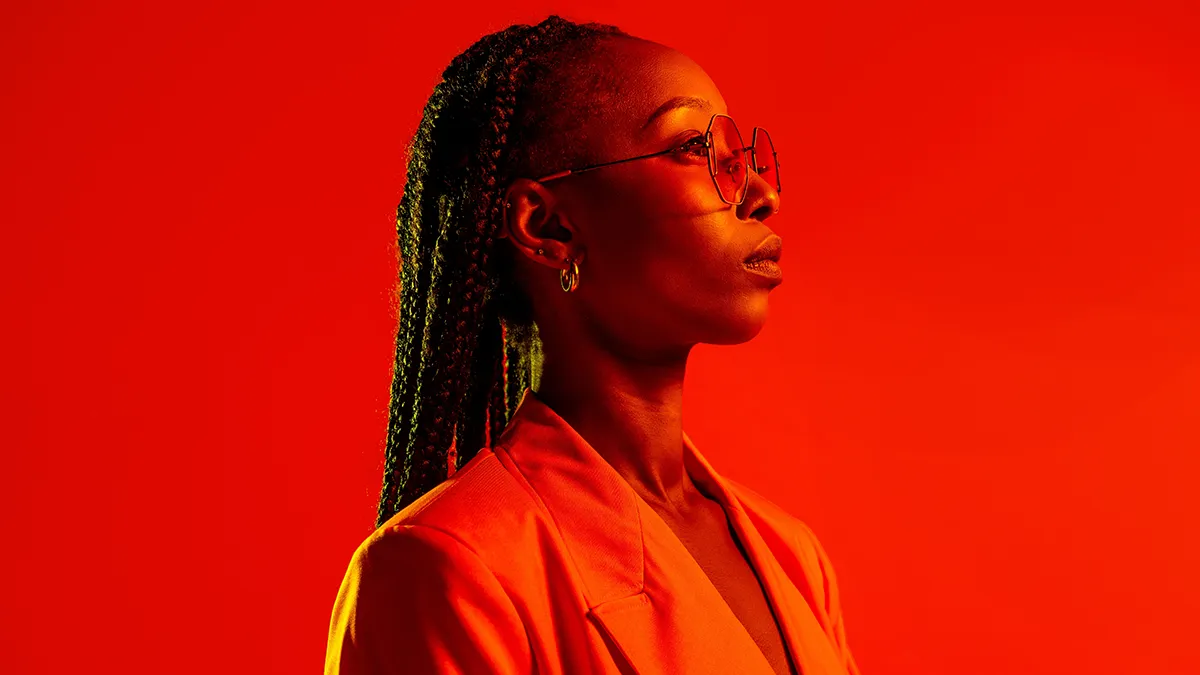
Most masks are rigid and claustrophobic, like you're the man behind the iron mask. The lack of flexibility may make them uncomfortable and harm the light distribution as the mask surface will not sit the same on different facial features. With LED light, you want contact with the skin, as the efficacy and penetration power of the light drop exponentially when it is shone above the skin rather than in contact with it. You can afford this power wastage with something as powerful as an LED panel meant to be used on the whole body at a distance, but not on a face mask. This is a major pain point, so the engineers at FAQ™ Swiss scanned over 10,000 faces to develop the very first LED mask that fits every face perfectly.
The mask material is a unique translucent, soft, yet resilient flexi-fit silicone that ergonomically adapts to your face. They mold to your face like a transparent second skin, and every millimeter gets equal concentration of LED light.
The silicone is also ultra-hygienic by design. It is non-porous (won't absorb gunk), easy to clean, and quick-drying. It is way more resistant to microbial contamination than plastic.
FAQ™ 202 LED face mask was designed for life, for real people, and schedules that may sometimes slap us right across the face. Smack! The mask adapts to you, and not the other way around, so ultra-lightweight; you'll barely know it's there. It has an open-eye and mouth design, and the eye area has an inbuilt shield that protects it from LED light spillage. The rechargeable, wireless mask lets you move freely and get on with your day without being tethered to a cord. It features a non-slip headband to keep the mask in place for 15-20 minutes as you do your thing.
You'll also be delighted to have the FAQ™ Swiss app at your disposal, to help you get the most out of your FAQ™ device. You can choose pre-programmed treatments, personalize all of the tech settings, set treatment reminders, because life gets too busy to keep track of everything, and automatic device sync and the latest software updates.
FAQ™ 202 vs FAQ™ 202 plus
FAQ™ 202 plus is all you love about the FAQ™ 202, plus more power and lights. It is your favorite anti-aging mask upgraded by popular demand. This is what the best brands do. They produce something unique and high-quality that adds more value to your life (why else would you give your money and time to them?) and then test it in real life, improving every subsequent generation based on their fanbase's voice.
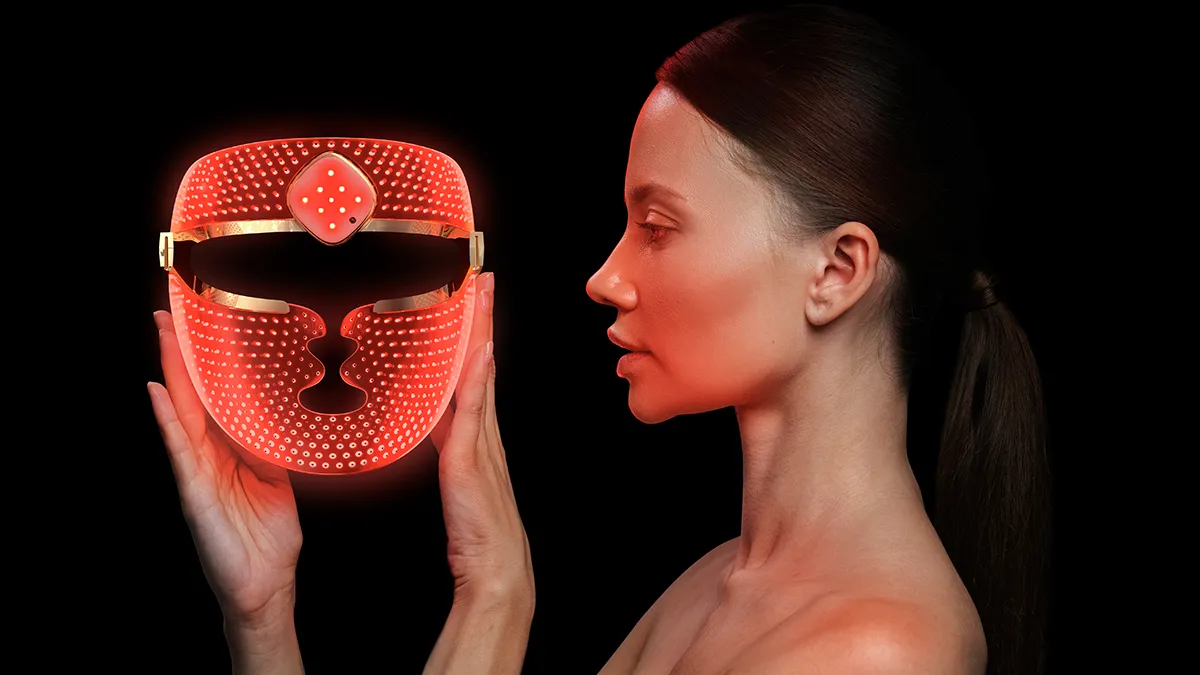
The most trusted name in luxury LED therapy, FAQ™ Swiss, did just that with the FAQ™ 202 plus. The upgraded LED mask now features 50% stronger light and more LEDs, bringing the total to 634 LED light points, compared to 600 in FAQ™ 202. In addition to more power, which means better penetration, the brighter light intensity reaches the skin around your eyes more efficiently, while the gold frame still protects your eyes.
There was also a "blind spot" under the forehead diamond containing the mask mechanism that got no LED illumination. It is no longer wasted space, but an enhanced area with 9 extra LEDs focused on those very prominent angry 11s. On the skin, all of these improvements reflect as clinically proven benefits, such as:
- Reduced wrinkles by 32% in just 2 weeks.
- Significantly increased elasticity in just 2 weeks.
- Significantly increased skin firmness.
- Reduced acne by 48% in just 2 weeks.
- Reduced sebum by 18% in just 2 weeks.
So it seems this works. Has LED finally led us to the skincare promised land? Perhaps not all the way — but it certainly lit the path. From Mester’s rats to NASA lettuce and the second-skin LED mask, what once healed astronauts’ wounds now revives your collagen and spirit in equal measure. The FAQ™ 202 and 202 plus are proof that beauty tech doesn’t need to feel cold or clinical. It can be intuitive, elegant, and designed for the way we actually live — between deadlines, coffee cups, and stolen moments of self-care rituals.
Conclusion
Which one to choose between FAQ™ 202 and FAQ™ 202 plus? It's completely up to you; you can't go wrong. The only coherent piece of advice is to choose what best fits your needs. If you're just seeing discrete initial signs of aging, your forehead isn't a problem, and the 11's haven't shown their angry face yet, FAQ™ 202 will most likely suffice. But if you've got some solid mid-brow lines forming or already deepening, or want a mask to last you through various life periods, FAQ™ 202 plus may be a better long-term choice. Consult with yourself or a dermatologist, and you do you. We hope we've offered some useful insights and answered your questions. For more info on the entire FAQ™ Swiss portfolio, slide on over here. Stay curious, stay beautiful, and enjoy living in your skin.
Up to 50% off FOREO Gift Sets: code MYSAUNWRAP
Bundle Wonderland from Dec 3 - Dec 31
It is the most wonderful time of the year when we jingle and mingle, and the gifting fever is the only thing louder than bells and buzzed uncles at family gatherings. Ho-ho-holiday home spa beauty gifts just got all bundled up into FOREO gift sets in The Bundle Wanderland. From Dec 3 - Dec 31, the holiday train choo-chooes by with an extra 35% off FOREO favorite devices and up to half off exclusive skincare with the code MYSAUNWRAP.
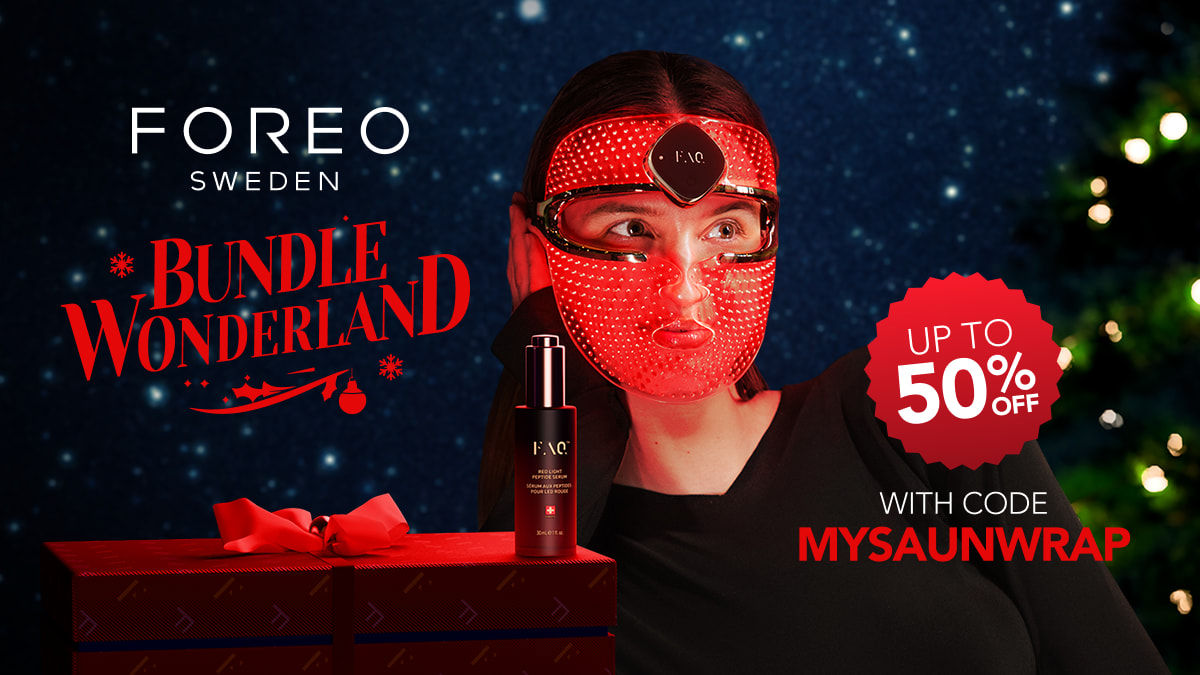
The impressive big-saver holiday skincare gift sets will delight your bulimic wallet and make you instantly glow with holiday cheer. Stay cool, curious, merry, and cozy as you wander through Bundle Wonderland, and enjoy living in your skin.
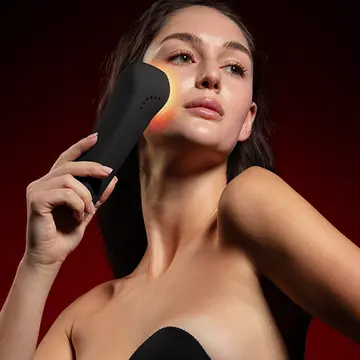
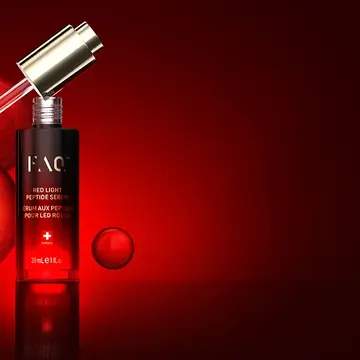






Leave a comment